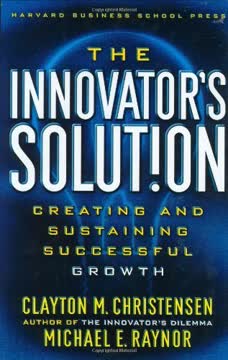Key Takeaways
1. Jobs Theory: Customers 'hire' products to make progress in specific circumstances
We define a "job" as the progress that a person is trying to make in a particular circumstance.
Progress, not products. Jobs Theory posits that customers don't simply buy products or services; they pull them into their lives to make progress. This progress is defined by the functional, social, and emotional dimensions of the job. The theory provides a framework for understanding the causal mechanism behind customer choices, offering a more predictable approach to innovation.
Circumstances matter. A job can only be fully understood in the context of the specific circumstances in which it arises. These circumstances include not just the functional situation, but also social and cultural pressures, life-stage factors, and financial status. By focusing on jobs, companies can see beyond traditional customer segments or product categories to uncover new opportunities for innovation.
- Key elements of a job:
- Progress desired
- Specific circumstances
- Functional, social, and emotional dimensions
- Competing solutions
- Obstacles and anxieties
2. Uncovering jobs requires deep understanding of customers' struggles
Hearing what a customer can't say requires careful observation of and interactions with customers, all carried out while maintaining a "beginner's mind."
Look for struggles. To uncover jobs, innovators must become part detective and part documentary filmmaker. They need to observe customers in their moments of struggle, looking for workarounds, compensating behaviors, and instances where existing solutions fall short. This requires setting aside preconceptions and maintaining a "beginner's mind" to truly see what customers are trying to achieve.
Build customer stories. One effective approach is to create detailed storyboards of customers' experiences, capturing the full context of their struggles and the progress they're trying to make. These stories should include both the "push" factors driving customers to seek new solutions and the "pull" of potential new offerings, as well as the forces of anxiety and habit that might hold them back from change.
- Methods for uncovering jobs:
- Observing customers in their natural environments
- Conducting in-depth interviews focused on specific circumstances
- Looking for unexpected uses of existing products
- Studying non-consumption and workarounds
- Building detailed customer journey maps
3. Innovation success comes from nailing the job, not just improving products
New products succeed not because of the features and functionality they offer but because of the experiences they enable.
Solve the whole job. Successful innovations don't just offer incremental improvements to existing products. They provide holistic solutions that address all aspects of the job customers are trying to get done, including the functional, emotional, and social dimensions. This often requires looking beyond traditional product boundaries to create entirely new categories or business models.
Remove obstacles. A key part of nailing the job is identifying and removing the obstacles that prevent customers from making progress. This might involve simplifying complex processes, reducing anxiety around adoption, or creating new distribution channels. By focusing on the job, companies can often find opportunities to innovate in areas that competitors have overlooked.
- Examples of job-focused innovations:
- Airbnb: Solving for authentic local experiences, not just accommodation
- Uber: Addressing the job of urban mobility, not just taxi rides
- IKEA: Enabling affordable home furnishing, not just selling furniture
4. Focusing on jobs transforms how companies define their business and competition
When you understand that concept, the idea of uncovering consumer jobs makes intuitive sense.
Redefine your business. Jobs Theory challenges companies to think beyond traditional industry and product category definitions. Instead of seeing themselves as being in the "milk shake business" or the "newspaper business," companies should define themselves by the jobs they solve for customers. This shift in perspective can open up new opportunities for growth and innovation.
Expand competitive landscape. Understanding jobs also transforms how companies view competition. Instead of just looking at direct product competitors, they need to consider all the ways customers might solve their job, including "non-consumption" options. This broader view of competition can reveal both new threats and new opportunities for differentiation.
- Examples of redefined businesses:
- OnStar: From car feature to peace of mind while driving
- American Girl: From dolls to enabling connections between mothers and daughters
- Southern New Hampshire University: From traditional education to enabling career advancement for working adults
5. Creating the right experiences is crucial for solving customers' jobs
Complete solutions to jobs must include not only your core product or service, but also carefully designed experiences of purchase and use that overcome any obstacles a customer might face in hiring your solution and firing another.
Design for the full job. To truly solve a customer's job, companies need to consider the entire experience surrounding their product or service. This includes how customers discover, purchase, and use the offering, as well as how it integrates into their lives. The goal is to create a seamless experience that addresses all aspects of the job.
Overcome adoption barriers. A critical part of designing experiences is identifying and addressing the anxieties and habits that might prevent customers from adopting a new solution. This might involve creating risk-free trials, providing education and support, or finding ways to make the transition from existing solutions as painless as possible.
- Key elements of job-focused experiences:
- Seamless discovery and purchase process
- Intuitive onboarding and first use
- Ongoing support and engagement
- Integration with existing habits and systems
- Clear communication of job-related benefits
6. Processes aligned with jobs provide sustainable competitive advantage
Competitive advantage is conferred through an organization's unique processes: the ways it integrates across functions to perform the customer's job.
Integrate around jobs. To consistently deliver on customers' jobs, companies need to align their internal processes and organizational structure around those jobs. This often requires breaking down traditional functional silos and creating new cross-functional teams focused on specific jobs or customer journeys.
Build unique capabilities. Job-aligned processes can create a powerful source of competitive advantage that is difficult for competitors to copy. While products can often be reverse-engineered, the complex web of processes and organizational capabilities required to consistently nail a job is much harder to replicate.
- Examples of job-aligned processes:
- Mayo Clinic: Coordinating specialists around patient needs
- Amazon: Optimizing every process for fast delivery and vast selection
- IKEA: Integrating design, manufacturing, and retail to enable affordable home furnishing
7. A jobs focus enables distributed decision-making and inspires employees
A well-articulated job provides a kind of "commander's intent," obviating the need for micromanagement because employees at all levels understand and are motivated by how the work they do fits into a larger process to help customers get their jobs done.
Empower employees. When everyone in an organization understands the jobs customers are hiring them to do, it becomes much easier to make decentralized decisions. Employees at all levels can use the job as a guiding principle to prioritize their work and make day-to-day choices that align with customer needs.
Create meaning and motivation. A clear focus on jobs can also be incredibly inspiring for employees. It provides a sense of purpose and connection to customer needs that goes beyond just hitting sales targets or improving product features. This shared mission can help unite diverse teams and functions around a common goal.
- Benefits of a jobs-focused organization:
- Clearer decision-making criteria at all levels
- Improved cross-functional collaboration
- Higher employee engagement and motivation
- More customer-centric culture
- Faster, more agile innovation processes
8. Beware of common data fallacies that can lead companies astray from jobs
Data has an annoying way of conforming itself to support whatever point of view we want it to support.
Look beyond active data. Companies often focus too heavily on easily measured "active" data like sales figures or customer demographics, while overlooking the crucial "passive" data found in customer struggles and contextual observations. This can lead to a disconnection from the real jobs customers are trying to solve.
Avoid confirmation bias. There's a natural tendency to interpret data in ways that confirm existing beliefs or support desired outcomes. To truly understand jobs, companies need to actively seek out information that challenges their assumptions and be willing to revisit core beliefs about their business.
- Common data fallacies to watch for:
- Overreliance on quantitative data at the expense of qualitative insights
- Focusing on product attributes rather than customer progress
- Mistaking correlation for causation in customer behavior
- Ignoring data that doesn't fit existing mental models
- Generalizing findings beyond the specific job context
9. Purpose brands arise when products become synonymous with jobs
A purpose brand is positioned on the mechanism that causes people to purchase a product: they nail the job.
Create a clear association. When a product or service becomes so closely associated with a specific job that customers automatically think of it when that job arises, it has achieved "purpose brand" status. This powerful positioning can lead to significant competitive advantages and premium pricing.
Communicate job focus. To build a purpose brand, companies need to consistently communicate how their offering solves a specific job, rather than just promoting features or general benefits. This requires a deep understanding of the job and a commitment to staying focused on it even as the business grows.
- Examples of strong purpose brands:
- Google for finding information
- FedEx for urgent package delivery
- Uber for urban transportation
- Airbnb for authentic travel experiences
- TurboTax for easy tax preparation
10. Jobs Theory has broad applications beyond product innovation
I have been stunned by how broadly and deeply the Theory of Jobs can be used.
Expand your perspective. While Jobs Theory is powerful for product and service innovation, its principles can be applied to a wide range of challenges in business and beyond. From improving education and healthcare to addressing personal relationships and societal issues, the jobs lens offers a valuable framework for understanding human motivations and designing better solutions.
Continually evolve the theory. As with any powerful theory, Jobs Theory will continue to evolve and improve as it's applied to new contexts and challenges. Practitioners are encouraged to look for anomalies and push the boundaries of the theory, using these insights to further refine and expand its applicability.
- Potential applications of Jobs Theory:
- Education: Understanding the jobs students and parents hire schools to do
- Healthcare: Aligning provider incentives with patient jobs for better outcomes
- Government: Designing policies and services that address citizens' real needs
- Personal relationships: Improving communication and understanding in families
- Social issues: Addressing complex societal challenges by focusing on underlying jobs
Last updated:
FAQ
What's Competing Against Luck about?
- Core Concept: The book introduces the Theory of Jobs to Be Done, which suggests that customers hire products to fulfill specific jobs in their lives. This shifts focus from product features to understanding customer needs.
- Innovation Framework: It provides a framework for innovation that emphasizes understanding the progress customers are trying to make, making innovation more predictable and profitable.
- Real-World Examples: The book includes case studies from companies like Airbnb and Intuit, illustrating successful applications of Jobs Theory to drive growth and innovation.
Why should I read Competing Against Luck?
- Transformative Insights: The book offers insights that can fundamentally change how you approach innovation, moving from a luck-based strategy to a systematic, theory-driven approach.
- Practical Framework: It provides a practical framework for identifying customer jobs, leading to more successful product development and marketing strategies.
- Expert Perspectives: Authored by Clayton M. Christensen, it draws on decades of research and experience, making it a credible resource for entrepreneurs and managers.
What are the key takeaways of Competing Against Luck?
- Jobs to Be Done: Understanding the specific jobs customers are trying to accomplish is crucial for successful innovation, allowing companies to create solutions that resonate with consumers.
- Causality Over Correlation: The book emphasizes understanding causality in consumer behavior rather than relying solely on data correlations for effective product development.
- Focus on Experiences: Successful innovations are about the experiences they create, addressing functional, emotional, and social dimensions of the customer journey.
What is the Theory of Jobs to Be Done in Competing Against Luck?
- Definition: It is a framework that helps businesses understand the progress customers are trying to make, emphasizing that customers hire products to fulfill these jobs.
- Causal Mechanism: The theory provides a causal mechanism for understanding why customers make certain choices, focusing on underlying motivations.
- Application: By applying this theory, companies can identify unmet needs and create innovative solutions, leading to more predictable innovation outcomes.
How does Competing Against Luck illustrate the importance of understanding customer jobs?
- Real-World Examples: Case studies like the milkshake dilemma show how understanding the job customers hire a product for can lead to significant insights and improvements.
- Emotional and Social Dimensions: The book highlights that customer jobs include emotional and social dimensions, leading to more meaningful innovations.
- Impact on Strategy: Understanding customer jobs can transform business strategies, as shown by companies like SNHU and Kimberly-Clark.
How can I identify customer jobs in my own business according to Competing Against Luck?
- Observe Customer Behavior: Look for patterns in how customers interact with your products to identify the jobs they are trying to accomplish.
- Conduct Interviews: Engage with customers to understand their struggles and motivations, using open-ended questions to uncover emotional and social dimensions.
- Analyze Nonconsumption: Identify areas where potential customers are not using any solutions, revealing opportunities for innovation.
What are the emotional and social dimensions of customer jobs in Competing Against Luck?
- Emotional Factors: These refer to how customers feel about their experiences and the impact on decision-making, such as choosing a product for comfort.
- Social Influences: Social dimensions involve the influence of others on a customer's choices, like family or societal expectations.
- Integration in Innovation: Successful innovations address both emotional and social dimensions alongside functional needs for compelling products.
What are the barriers to hiring a new product according to Competing Against Luck?
- Habits of the Present: Established habits can create inertia, making customers resistant to change.
- Anxiety of Change: Fear of the unknown can be a significant barrier, with customers worrying about the effectiveness of a new product.
- Overcoming Barriers: Businesses must provide reassurance, simplify transitions, and demonstrate clear benefits to overcome these barriers.
How does Competing Against Luck suggest companies can innovate effectively?
- Focus on Customer Experience: Design products and services around the complete customer experience, addressing the jobs customers are trying to accomplish.
- Iterative Process: Innovation should involve continuous feedback from customers, refining offerings based on real-world insights.
- Integration of Insights: Successful innovation requires integrating insights from various sources, leading to more effective solutions.
What are the fallacies of innovation data discussed in Competing Against Luck?
- Active vs. Passive Data: Companies often focus on operational data post-launch, missing the context of customer needs reflected in passive data.
- Surface Growth: Pursuing growth by adding more products can lead to confusion, rather than solving the core job effectively.
- Conforming Data: Managers may interpret data to support existing beliefs, missing opportunities for innovation.
What are some examples of companies that successfully applied Jobs Theory from Competing Against Luck?
- Airbnb: Identified the job of providing authentic local experiences, disrupting the traditional hotel industry.
- Intuit's QuickBooks: Recognized small business owners' need for simple financial management, leading to market leadership.
- IKEA: Designed its shopping experience around the job of furnishing a home quickly and affordably.
What are the best quotes from Competing Against Luck and what do they mean?
- "People don’t want to buy a quarter-inch drill. They want a quarter-inch hole.": Emphasizes that customers seek solutions to problems, not just products.
- "The experiences you create to respond to the job spec are critical...": Highlights the importance of designing experiences that align with customer jobs.
- "Jobs Theory helps you do that. It’s crazy powerful, if you get that right.": Reflects the transformative potential of applying Jobs Theory in organizations.
Review Summary
Competing Against Luck presents the "Jobs to Be Done" theory, which focuses on understanding customers' underlying needs and motivations. Many reviewers found the book insightful and practical, praising its clear examples and actionable advice for businesses. The theory is seen as a valuable framework for innovation and customer-centric thinking. Some critics felt the book was repetitive or overly simplistic, but overall, it was well-received for its fresh perspective on product development and customer understanding. Many readers considered it a must-read for business leaders and innovators.
Similar Books
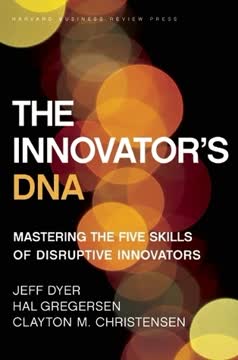

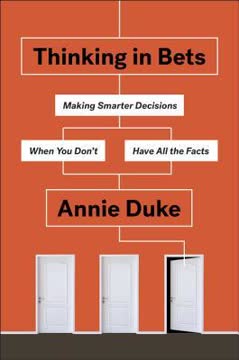

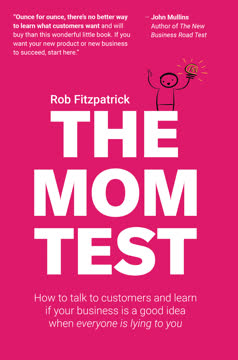

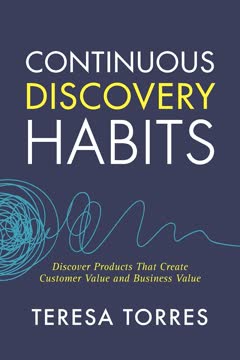


Download PDF
Download EPUB
.epub digital book format is ideal for reading ebooks on phones, tablets, and e-readers.



